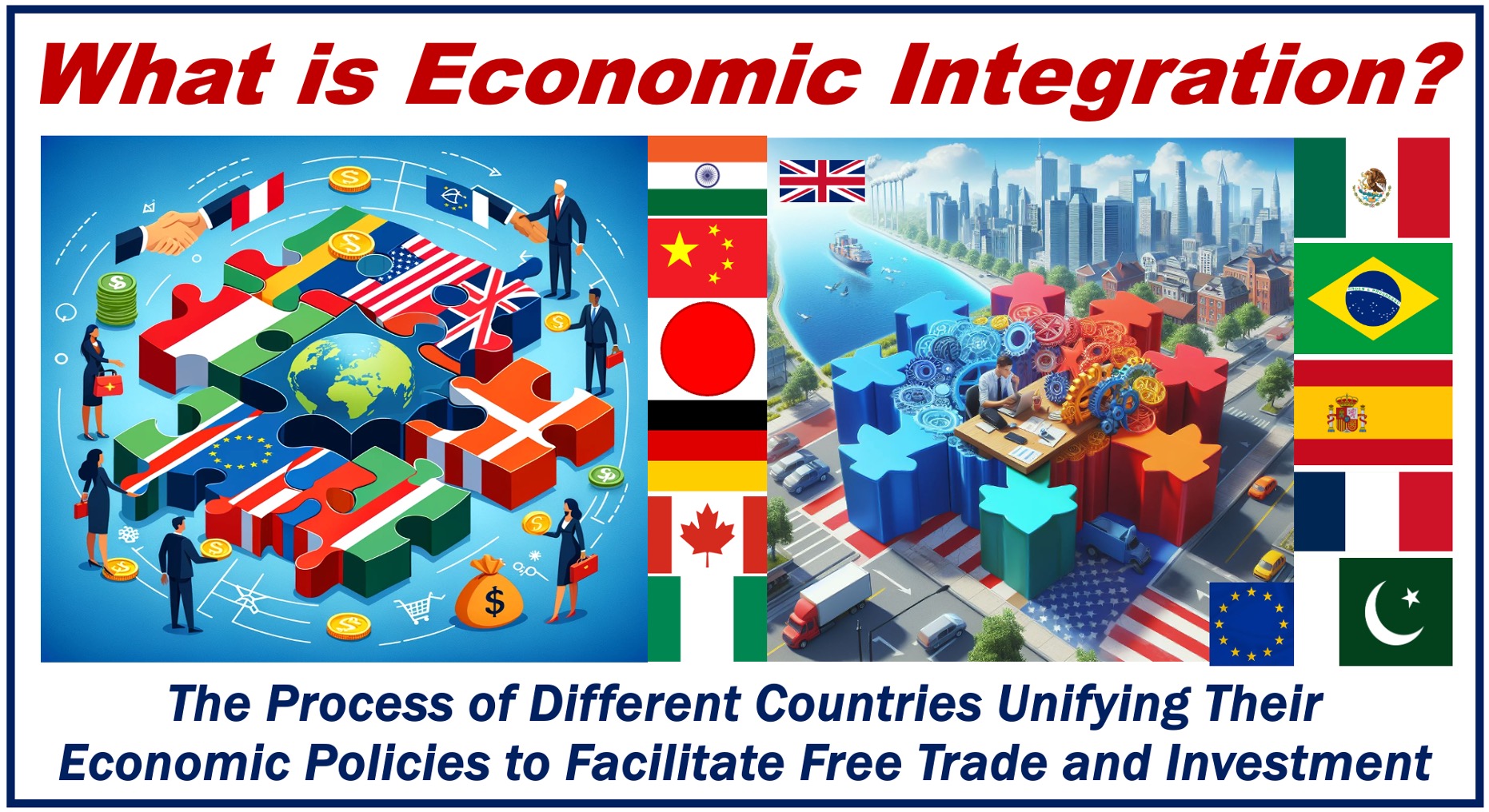When countries reduce barriers to trade and investment and gradually align their economic policies and regulations, they are undergoing Economic Integration. This concept is fundamental to understanding how the world’s economy operates today.
It affects everything from the prices of everyday goods to employment/unemployment conditions.
Economic integration, at its core, is all about trying to make it easier for nations to do business with each other.
Trade barriers
By lowering trade barriers, countries can boost their economies and consumers can enjoy lower prices and more choices.
Examples of trade barriers (barriers of trade) include:
- Tariffs – taxes on imports and exports.
- Quotas – limits on the amount of certain goods that can be imported or exported.
- Subsidies – government funds to local firms, undercutting foreign competition.
- Import Licensing – permits required to import specific products.
- Standards and Regulations – rules for quality and safety that imported goods must meet.

Economic integration – 5 stages
Economic integration is a multifaceted process with several progressive stages, each designed to enhance compatibility and cooperation between nations. Below, we explore the five principal stages of this process:
Free trade area
The simplest form is a free trade area, where participating nations agree to eliminate tariffs among themselves. However, they maintain their own external trade policies.
Customs union
In a customs union, member countries adopt a common external tariff for non-members.
Single market
This goes one step further, allowing the free movement of goods, services, capital, and people.
Economic union
At this stage, member states harmonize their national economic policies.
Monetary union
This is the most integrated level, where countries adopt a single currency. In the European Union (EU), some countries have adopted the euro as their national currency – those countries form part of the Eurozone.
Not all EU countries are in the Eurozone. Sweden, for example, is not in the Eurozone; it has held onto its own currency, the Swedish krona, but it is an EU member.
Benefits of economic integration
Economic integration offers participating countries several advantages:
- New markets for businesses.
- The elimination of tariffs and simplified regulations means lower costs for exporters and importers.
- Consumers enjoy more choice and better prices.
- Citizens have more choice regarding where to work and live.
- Increased efficiency, innovation, and economic growth as a result of competition and resources being able to move to where they are most productive.
Challenges regarding economic integration
Some of the disadvantages include:
- Possible job losses in sectors that struggle to compete with imports.
- Some citizens fear that it can erode national sovereignty, as countries must negotiate and sometimes cede control over trade policies and regulations.
Brexit – Britain exiting from the European Union – occurred partly because many citizens felt that national sovereignty was being eroded.
